|

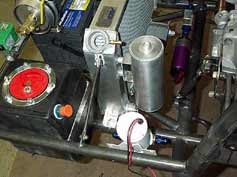 |
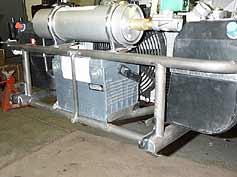 |
| Ahead of the engine, the FWD
car contains: Radiator, radiator cooling fan, coolant
overflow, engine oil cooler, fuel system, battery,
accumulator and more. Keep in mind that this stuff
can’t be installed haphazard. Arrangement of
the parts is thought out. Obviously, servicing the
car at the track was a major consideration too. |
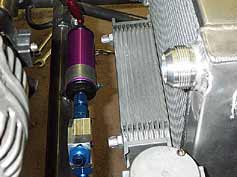 |
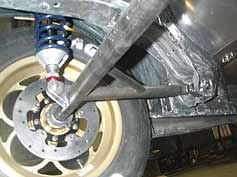 |
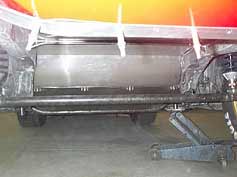 |
| What about the
rear? Compared to the front, it’s dirt-simple.
GM used a basic beam axle that ties directly into the
OEM suspension mounts and shock/strut tower. For the
most part, the rear end is simply along for the ride,
but obviously, brakes are included in the equation. |
Rear suspension is pretty straightforward (literally) on
these cars. For the most part, a simple beam axle is used.
Here’s the Rulebook excerpt: Suspension, Rear: “Factory
independent suspension may be replaced with straight-axle
suspension, but must retain original upper mounting points.
ADVERTISEMENT
 |
Strut tower braces, lower tie bars, sway bars, and limit
straps are permitted. Rear suspension must maintain minimum
shock travel of 1 inch. All rear suspensions must use at
least one working shock absorber per wheel. Strut must attach
to original OEM upper mount.”
Now, someone crafty might realize that a clever way to make
these cars “hook” would be to use the wheelie
bars to an advantage. You can, but the opportunity to use
things like pneumatics or electronics to physically load
and unload the wheelie bars at the most appropriate time
has been eliminated by the regulations. What you’re
left with is more or less a standard wheelie bar arrangement:
Wheelie Bars: “Permitted. Maximum length 65 inches from rear bumper.
May be adjustable, but must be fixed during run. Any movement or adjustment
during run prohibited. Pneumatics, hydraulics, electronics, etc. prohibited.
Wheelie-bar wheels must spin free at the starting line. Any preload prohibited.
Permitted. See General Regulations 4:2.”

|
